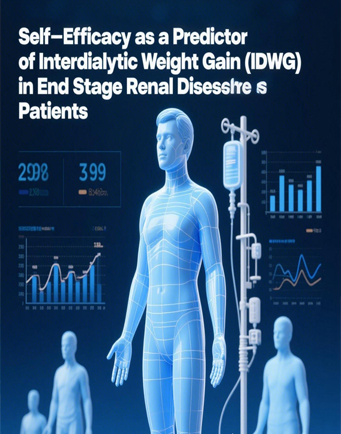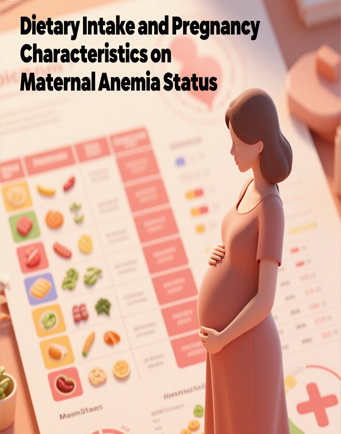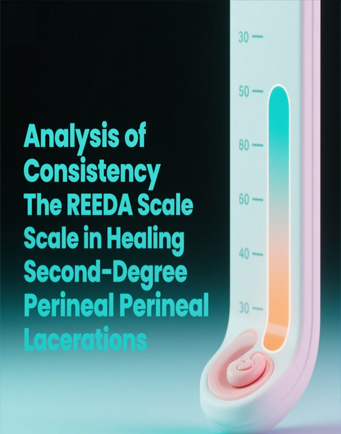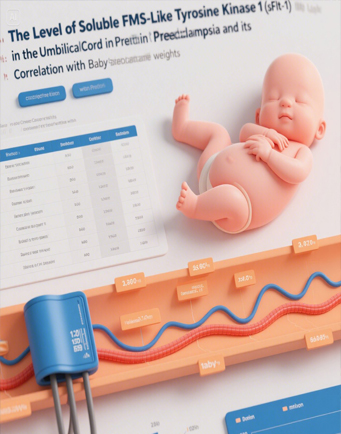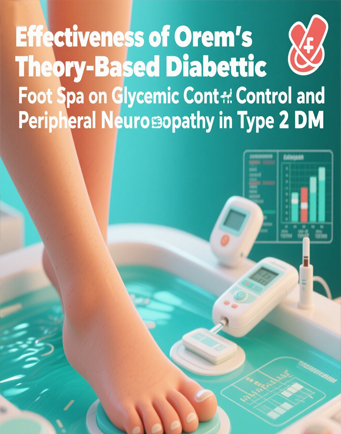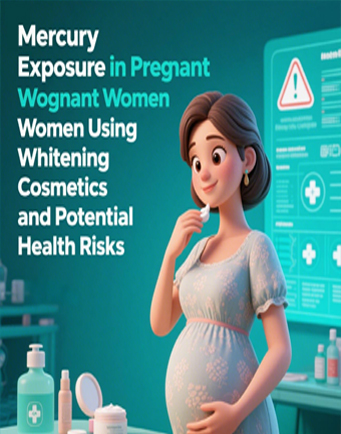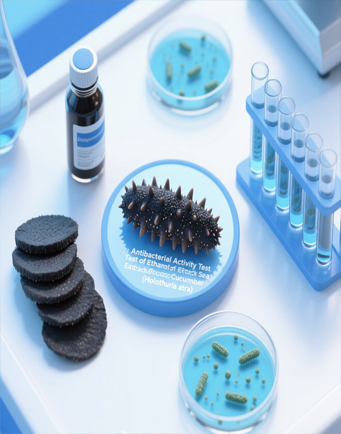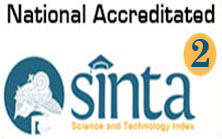Evaluation of Antioxidant Activity in Solanum Ferox (Through DPPH and FRAP Assays)
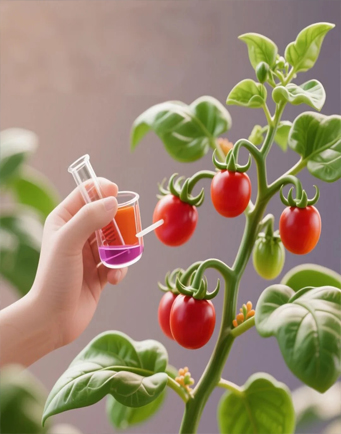
Downloads
The antioxidant properties of natural compounds have garnered significant attention for their potential therapeutic applications. Solanum ferox, a plant traditionally used in several countries for medicinal purposes, has been identified as possessing potential antioxidant properties. However, the extent and efficacy of its antioxidant capacity have not been thoroughly examined, creating a gap in understanding its effectiveness compared to established antioxidants like ascorbic acid. This study aims to evaluate the antioxidant capacity of Solanum ferox using DPPH and FRAP assays across concentrations ranging from 20 to 100 µg/µl, with ascorbic acid serving as a standard reference. The DPPH assay measured the scavenging activity of both samples to assess their radical-quenching properties, while the FRAP assay evaluated their reducing power. Findings indicate that ascorbic acid exhibits significantly higher scavenging activity than Solanum ferox across all concentrations, with consistent activity ranging between 88.4% and 90.88% in the DPPH assay and from 45.16% to 83.89% in the FRAP assay. In contrast, Solanum ferox shows a gradual but much lower increase in activity, from 6.8% to 35.5% in the DPPH assay and from 10.59% to 33.82% in the FRAP assay, suggesting limited antioxidant potential. The study contributes to the understanding of the antioxidant properties of Solanum ferox, highlighting its limited efficacy compared to ascorbic acid and suggesting that further research is needed to explore its potential at higher concentrations or through alternative methods. These insights provide a foundational basis for future studies investigating Solanum ferox as a potential natural antioxidant source.
Abdullah, M., Nesa, M., Islam, R., Banu, J., Sarkar, J., & Islam, N. (2012). Bioactivity studies of Solanum ferox L. against Tribolium castaneum (Herbst) Adults. Journal of Life and Earth Science, 7, 29–32. https://doi.org/10.3329/jles.v7i0.20118
Al-Garadi, M. A., Qaid, M. M., Alqhtani, A. H., Pokoo-Aikins, A., & Al-Mufarrej, S. I. (2022). In vitro phytochemical analysis and antibacterial and antifungal efficacy assessment of ethanolic and aqueous extracts of Rumex nervosus leaves against selected bacteria and fungi. Veterinary World, 15(11), 2725. http://doi.org/10.14202/vetworld.2022.2725-2737
Arthan, D., Svasti, J., Kittakoop, P., Pittayakhachonwut, D., Tanticharoen, M., & Thebtaranonth, Y. (2002). Antiviral isoflavonoid sulfate and steroidal glycosides from the fruits of Solanum torvum. Phytochemistry, 59(4), 459–463. https://doi.org/10.1016/S0031-9422(01)00417-4
Aubriot, X., & Knapp, S. (2022). A revision of the "spiny solanums" of Tropical Asia (Solanum, the Leptostemonum Clade, Solanaceae). PhytoKeys, 198, 1–270. https://doi.org/10.3897/phytokeys.198.79514
Bai, Y., Zheng, H., Shen, X., Hu, K., Huang, W., & Liu, J. (2024). g‐C3N4 based composite materials for photo‐Fenton reaction in water remediation: A review of synthesis methods, mechanism, and applications. ChemCatChem, 16(20), e202400802. https://doi.org/10.1002/cctc.202400802
Bajić, V., Spremo-Potparević, B., Živković, L., Čabarkapa, A., Kotur-Stevuljević, J., Isenović, E., ... & Nedeljković, J. M. (2017). Surface-modified TiO2 nanoparticles with ascorbic acid: Antioxidant properties and efficiency against DNA damage in vitro. Colloids and Surfaces B: Biointerfaces, 155, 323–331. https://doi.org/10.1016/j.colsurfb.2017.04.032
Benzie, I. F., & Devaki, M. (2018). The ferric reducing/antioxidant power (FRAP) assay for non‐enzymatic antioxidant capacity: Concepts, procedures, limitations, and applications. Measurement of Antioxidant Activity & Capacity: Recent Trends and Applications. Wiley. https://doi.org/10.1002/9781119135388.ch5
Dailah, H. G. (2022). The ethnomedicinal evidences pertaining to traditional medicinal herbs used in the treatment of respiratory illnesses and disorders in Saudi Arabia: A review. Saudi Journal of Biological Sciences, 29(9), 103386. https://doi.org/10.1016/j.sjbs.2022.103386
Fadhli, H., & Fitriyah, D. (2023). Stigmasterol (Steroid) From Leaves of Solanum ferox L (Sour Eggplant) Plant. Al-Kimia, 11(1), 20-27. https://doi.org/10.24252/al-kimia.v11i1.35337
Granato, D., Santos, J. S., Maciel, L. G., & Nunes, D. S. (2016). Chemical perspective and criticism on selected analytical methods used to estimate the total content of phenolic compounds in food matrices. TrAC Trends in Analytical Chemistry, 80, 266–279. https://doi.org/10.1016/j.trac.2016.03.010
Hamzah, M. H., Rahim, A. Z. M., Maringgal, B., Basri, M. S. M., & Ibrahim, S. (2022). Optimization of silk fibroin coating during storage using response surface methodology and its effect on the physicochemical properties of Solanum ferox (S. ferox). Journal of Food Measurement and Characterization, 16(5), 3385–3401. https://doi.org/10.1007/s11694-022-01591-8
Hazimah, H., Haiyul, F., Dina, F., Yuharmen, Y., & Widya, R. (2023). Isolation of antioxidant and antibacterial compounds from Solanum ferox L. leaves. Journal of Biopharmaceutics, 14(2), 112–118. https://doi.org/10.1051/bioconf/20237003007
Isla, M., Fernandez, L., & Santos, M. (2022). Bioactive compounds from Solanum betaceum waste: A resource for the food and pharmaceutical industries. Waste and Biomass Valorization, 13(2), 543–553. https://doi.org/10.1007/s12649-021-01516-4
Jan, S., Iram, S., Bashir, O., Shah, S. N., Kamal, M. A., Rahman, S., ... & Jan, A. T. (2024). Unleashed Treasures of Solanaceae: Mechanistic Insights into Phytochemicals with Therapeutic Potential for Combatting Human Diseases. Plants, 13(5), 724. https://doi.org/10.3390/plants13050724
Jing, Y., Diao, Y., & Yu, X. (2019). Free radical-mediated conjugation of chitosan with tannic acid: Characterization and antioxidant capacity. Reactive and Functional Polymers, 135, 16–22. https://doi.org/10.1016/j.reactfunctpolym.2018.12.001
Kalalinggi, S. Y. (2024). In Vitro Activity of Ethanol Extract of Rimbang Fruit (Solanum ferox) as an Active Ingredient in Sunscreen Preparations. Indonesian Journal of Chemical Analysis (IJCA), 7(1), 72-81. https://doi.org/10.20885/ijca.vol7.iss1.art8
Medina-Medrano, J. R., Almaraz-Abarca, N., González-Elizondo, M. S., Uribe-Soto, J. N., González-Valdez, L. S., & Herrera-Arrieta, Y. (2015). Phenolic constituents and antioxidant properties of five wild species of Physalis (Solanaceae). Botanical Studies, 56(1), 1–13. https://doi.org/10.1186/s40529-015-0084-6
Meyer, R. S., Bamshad, M., Fuller, D. Q., & Litt, A. (2014). Comparing medicinal uses of eggplant and related Solanaceae in China, India, and the Philippines suggests the independent development of uses, cultural diffusion, and recent species substitutions. Economic Botany, 68, 137–152. https://doi.org/10.1007/s12231-014-9261-2
Nandi, L. L., Saha, P., Jaiswal, S., Lyngdoh, Y. A., Behera, T. K., Pan, R. S., ... & Tomar, B. S. (2021). Bioactive compounds, antioxidant activity and elements content variation in indigenous and exotic Solanum sp. and their suitability in recommended daily diet. Scientia Horticulturae, 287, 110232. https://doi.org/10.1016/j.scienta.2021.110232
Osiecki, M., Ghanavi, P., Atkinson, K., Nielsen, L. K., & Doran, M. R. (2010). The ascorbic acid paradox. Biochemical and Biophysical Research Communications, 400(4), 466–470. https://doi.org/10.1016/j.bbrc.2010.08.088
Pham-Huy, L. A., He, H., & Pham-Huy, C. (2008). Free radicals, antioxidants in disease and health. International journal of biomedical science : IJBS, 4(2), 89–96. Retrieved from: https://pmc.ncbi.nlm.nih.gov/articles/PMC3614697/
Pisoschi, A. M., & Pop, A. (2015). The role of antioxidants in the chemistry of oxidative stress: A review. European Journal of Medicinal Chemistry, 97, 55–74. https://doi.org/10.1016/j.ejmech.2015.04.040
Poljsak, B., Šuput, D., & Milisav, I. (2013). Achieving the balance between ROS and antioxidants: When to use the synthetic antioxidants. Oxidative Medicine and Cellular Longevity, 2013(1), 956792. https://doi.org/10.1155/2013/956792
Putri, N. N. P., Anggriani, R., & Sukardi, S. (2023). Bioactive compounds in Solanum torvum and its potential as functional food and drink: A review. Biology, Medicine, & Natural Product Chemistry, 12(1), 205–213. https://doi.org/10.12990/biomedchem.12.1.2023
Qi, Z., Wang, S., Li, Y., Wang, L., Zhao, L., Ge, Q., & Zhang, J. Z. (2021). Scavenging activity and reaction mechanism of Ti3C2Tx MXene as a novel free radical scavenger. Ceramics International, 47(12), 16555–16561. https://doi.org/10.1016/j.ceramint.2021.03.196
Raduan, S. Z., Khalid, K. N. A., Jihek, M. F. A., Ganasan, S., Salim, U. S., & Aziz, M. W. H. A. (2019). Anticariogenic properties of Solanum ferox L. ethanol extract. Annals of Dentistry University of Malaya, 26, 22–29. https://doi.org/10.22452/adum.vol26no4
Rahardjo, S., Vauza, M. A. T., Rukmono, D., & Wiradana, P. A. (2022). Supplementation of hairy eggplant (Solanum ferox) and bitter ginger (Zingiber zerumbet) extracts as phytobiotic agents on whiteleg shrimp (Litopenaeus vannamei). Journal of Advanced Veterinary and Animal Research, 9(1), 78. https://doi.org/10.5455/javar.2022.i571
Ranil, R. H. G., Prohens, J., Aubriot, X., Niran, H. M. L., Plazas, M., Fonseka, R. M., & Knapp, S. (2017). Solanum insanum L. (subgenus Leptostemonum Bitter, Solanaceae), the neglected wild progenitor of eggplant (S. melongena L.): A review of taxonomy, characteristics, and uses aimed at its enhancement for improved eggplant breeding. Genetic Resources and Crop Evolution, 64, 1707–1722. https://doi.org/10.1007/s10722-016-0475-6
Raspe, D. T., Ciotta, S. R., Zorzenon, M. R. T., Dacome, A. S., da Silva, C., Milani, P. G., & da Costa, S. C. (2021). Ultrasound-assisted extraction of compounds from Stevia leaf pretreated with ethanol. Industrial Crops and Products, 172, 114035. https://doi.org/10.1016/j.indcrop.2021.114035
Rosmainar, L., Toepak, E. P., & Nugroho, W. (2023). Skrining fitokimia dan uji antioksidan menggunakan metode DPPH pada ekstrak metanol buah terung asam besar (Solanum ferox Linn). Jurnal Crystal: Publikasi Penelitian Kimia dan Terapannya, 5(1), 30–39. https://doi.org/10.36526/jc.v5i1.2590
Sivapalan, S., Dharmalingam, S., Ashokkumar, V., Venkatesan, V., & Angappan, M. (2024). Evaluation of the anti-inflammatory and antioxidant properties and isolation and characterization of a new bioactive compound, 3, 4, 9-trimethyl-7-propyldecanoic acid from Vitex negundo. Journal of Ethnopharmacology, 319, 117314. https://doi.org/10.1016/j.jep.2024.117314
Ugoeze, K. C. (2022). Phytopharmaceuticals for treating sexually transmitted diseases. Herbal drugs for the management of infectious diseases, 179-261. https://doi.org/10.1002/9781119818779.ch8
Yin, Y., Wang, Y., Ding, C., Zhou, Z., Tang, X., He, L., ... & Wang, X. (2024). Impact of iron and sulfur cycling on the bioavailability of cadmium and arsenic in co-contaminated paddy soil. Journal of Hazardous Materials, 465, 133408. https://doi.org/10.1016/j.jhazmat.2023.133408
Copyright (c) 2025 JURNAL INFO KESEHATAN

This work is licensed under a Creative Commons Attribution-NonCommercial-ShareAlike 4.0 International License.
Copyright notice
Ownership of copyright
The copyright in this website and the material on this website (including without limitation the text, computer code, artwork, photographs, images, music, audio material, video material and audio-visual material on this website) is owned by JURNAL INFO KESEHATAN and its licensors.
Copyright license
JURNAL INFO KESEHATAN grants to you a worldwide non-exclusive royalty-free revocable license to:
- view this website and the material on this website on a computer or mobile device via a web browser;
- copy and store this website and the material on this website in your web browser cache memory; and
- print pages from this website for your use.
- All articles published by JURNAL INFO KESEHATAN are licensed under the Creative Commons Attribution 4.0 International License. This permits anyone to copy, redistribute, remix, transmit and adapt the work provided the original work and source is appropriately cited.
JURNAL INFO KESEHATAN does not grant you any other rights in relation to this website or the material on this website. In other words, all other rights are reserved.
For the avoidance of doubt, you must not adapt, edit, change, transform, publish, republish, distribute, redistribute, broadcast, rebroadcast or show or play in public this website or the material on this website (in any form or media) without appropriately and conspicuously citing the original work and source or JURNAL INFO KESEHATAN prior written permission.
Permissions
You may request permission to use the copyright materials on this website by writing to jurnalinfokesehatan@gmail.com.
Enforcement of copyright
JURNAL INFO KESEHATAN takes the protection of its copyright very seriously.
If JURNAL INFO KESEHATAN discovers that you have used its copyright materials in contravention of the license above, JURNAL INFO KESEHATAN may bring legal proceedings against you seeking monetary damages and an injunction to stop you using those materials. You could also be ordered to pay legal costs.
If you become aware of any use of JURNAL INFO KESEHATAN copyright materials that contravenes or may contravene the license above, please report this by email to jurnalinfokesehatan@gmail.com
Infringing material
If you become aware of any material on the website that you believe infringes your or any other person's copyright, please report this by email to jurnalinfokesehatan@gmail.com.







